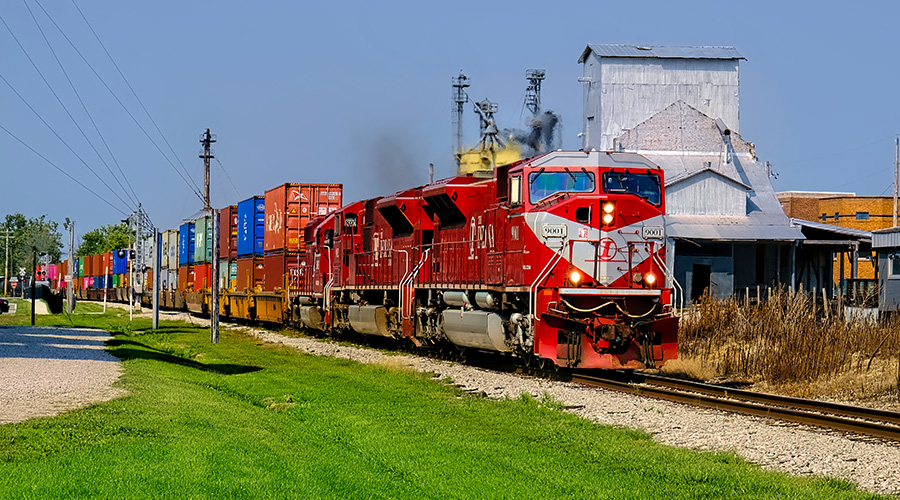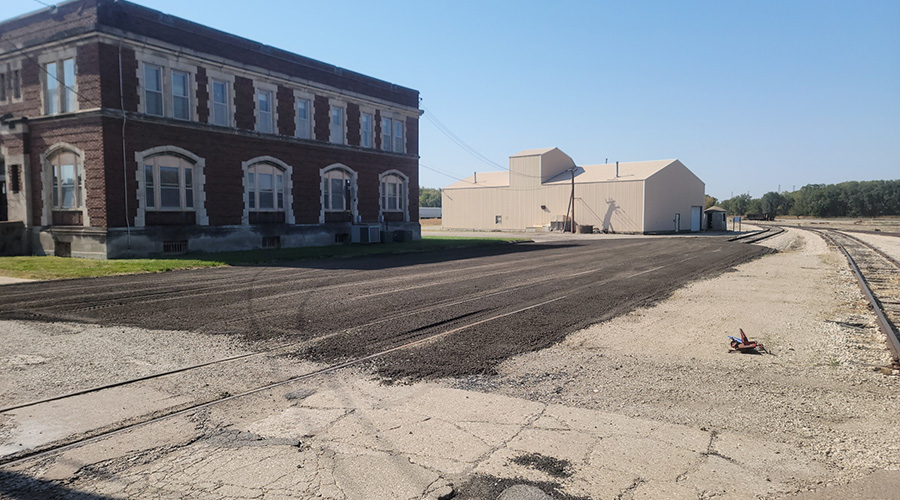Many small railroads scored more traffic in 2021, RailConnect index shows
2/7/2022
By Jeff Stagl, Managing Editor
After a so-so 2020, regionals and short lines collectively had a solid traffic-building year in 2021. An index that incorporates traffic data from 454 small railroads shows their carloads last year totaled 6.9 million units, up 6.4% compared with the nearly 6.5 million units they logged in 2020.
Carloads climbed in 12 of the 14 commodity groups tracked by the RailConnect Index of Short Line Traffic, which is compiled by Wabtec Corp.’s GE Transportation subsidiary. Only grain, which fell 1.6% to 796,097 units, and all other traffic, which dipped 1.4% to 108,268 units, registered year-over-year declines.
The biggest group gainers in 2021 — as in double-digit increases — were waste and scrap materials, up 21.5% to 308,703 units; intermodal, up 13.3% to 1,301,982 units; motor vehicles and equipment, up 12.1% to 153,520 units; and ores, up 11.2% to 157,813 units. Other strong-performing commodities were petroleum and coke, up 8.9% to 226,351 units; coal, up 8.5% to 425,611 units; metals and products, up 8% to 463,502 units; stone, clay and aggregates, up 7.9% to 684,630 units; and lumber and forest products, up 7% to 311,539 units.
Solid forest products volume helped drive overall freight traffic to a record level in 2021 for the Reading, Blue Mountain and Northern Railroad Co. (R&N). Pulp, paper and wood product loads totaled nearly 11,500 units, up 9.6% year over year.
 An operator of three short lines, Carload Express registered an 8.8% traffic gain last year after volume had plummeted 16.9% in 2020. Carload Express Inc.
An operator of three short lines, Carload Express registered an 8.8% traffic gain last year after volume had plummeted 16.9% in 2020. Carload Express Inc. The regional grew forest products traffic even though no new facilities opened on its line in 2021. R&N instead reached new highs in inbound rail volume by serving many packaging material suppliers.
“Much of the growth can be attributed to the so-called ‘Amazon Effect’ — the fact that more Americans are relying on home deliveries of goods, thus increasing the demand for corrugated packaging,” R&N officials said in a press release. “Growth would have been even higher if not for the diversion of over 400 carloads to trucks due to various service disruptions on the nation’s rail system.”
Carloads shot up considerably in 2021 for Sierra Northern Railway, as well.
“While most of our rail customers only saw slight increases in traffic, we developed a new transload facility on our Oakdale Division in late 2020. This facility, along with our anchor business, increased our rail-car volume by 50% versus 2020,” said Sierra Northern Railway President and CEO Kennan Beard in an email.
For the New Orleans Public Belt Railroad (NOPB), 2021 volume climbed 16% to 167,355 units. The short line also grew monthly car storage volume last year. Stored cars averaged 914 — or 189 more cars on average per month — which set a car storage volume record, wrote Jessica Ragusa, the Port of New Orleans’ communications manager, in an email.
“The port’s strength as a gateway to the Midwest continues to be a competitive advantage, and its intermodal connections to Memphis and Chicago via CN and the Dallas-Fort Worth market via KCS continue to attract new importers seeking alternative options via our strong inland gateway,” she said.
 The Reading & Northern set a new carload record in 2021. A 9.6% gain in pulp, paper and wood product carloads helped drive up total volume. Reading, Blue Mountain and Northern Railroad Co.
The Reading & Northern set a new carload record in 2021. A 9.6% gain in pulp, paper and wood product carloads helped drive up total volume. Reading, Blue Mountain and Northern Railroad Co. An informal survey conducted by RailPrime revealed a number of other regionals, short lines and holding companies that boosted traffic in 2021:
- Farmrail System Inc. (which includes Farmrail Corp. and Grainbelt Corp.) logged a 14.8% gain;
- Genesee & Wyoming Inc. (owner of 113 small roads in North America) posted 8% growth;
- Pioneer Lines (owner of 15 short lines) netted a 6% hike;
- Buckingham Branch Railroad recorded a 4.9% increase;
- Red River Valley & Western Railroad Co. registered a 0.8% bump;
- OmniTRAX Inc. (which owns or manages 24 short lines) logged a gain by an undisclosed percentage; and
- Mississippi Export Railroad also notched an increase by an undisclosed percentage.
In the nation’s largest rail hub, the Belt Railway Co. of Chicago’s (BRC) volume dropped 8% from 2.6 million cars handled in 2020 to 2.4 million cars in 2021. The decline was due to fewer trackage trains operated over the railroad’s mainline — direct interchange or run-through trains from one carrier to another that don’t involve the short line’s hump, said BRC President Mike Grace in an email.
“Most of these were unit trains, [such as] potash, grain, crude, sand and coal,” he said.
At Carload Express Inc. — which operates three short lines — carloads typically reach about 90,000 each year. Last year, carloads rose 8.8% after declining sharply by 16.9% in 2020, wrote Carload Express President and CEO Mark Rosner in an email.
“We anticipate strong [carload] growth in 2022,” he added.
However, small roads aren’t off to an encouraging traffic start in 2022, in part due to what’s now tough year-over-year comparisons. The latest RailConnect index — which covers the year’s first four weeks — shows total carloads for 453 regionals and short lines were down 4.3% to 510,542 units through Jan. 29.


